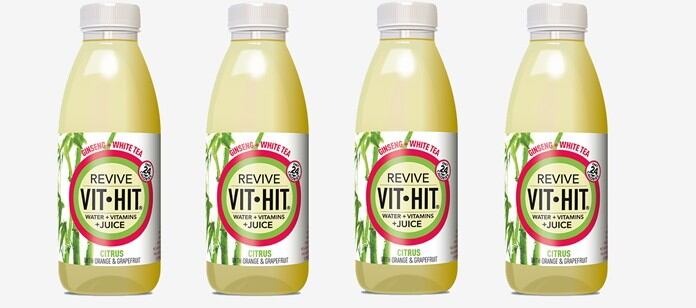At the recent IFT 2014 show in New Orleans, Mintel analysts broke down the market by segment, discussing standout products and manufacturers as well as the exciting morning time potential of sustained energy.
In short, the energy market is all over the place, said Mintel's director of innovation and insight Lynn Dornblaser. Just looking at data for energy in the afternoon, almost half consumers say they go for an energy drink as their first choice; the second, and not far behind, is water. “The fact is, consumers choose a lot of things; it’s not just about energy drinks and shots. In the afternoon, they don’t drink coffee. Big picture, we see them drinking or eating a lot of things to give themselves a boost.”
Not only that, but all the recent bad press surrounding energy drink consumption has led even steadfast energy drink and shot users to question the products’ health and safety, leaving the door open for competitors in alternative energy. (Mintel still projects energy drink consumption to rise over the next five years, however.)
How far can you stretch the concept of energy delivery?
“The energy market is seeing interference from a lot of other segments,” added Mintel director of innovation and insight David Jago. Indeed, looking at the drinkable format in particular raises the questions of how far you can stretch the concept of energy delivery.

Indeed, products such as the UK-based Natural Brands Bounce Natural Energy Ball, is positioned as a 100% natural snack that staves off hunger and provides “sustained energy” through its high protein content. It gets an additional boost as a fitness-oriented product, as its founders are a husband-and-wife team of former personal trainers.
Another product, Sealand Birk natural energy drink—now widely sold in northern Europe and Scandanavia—positions itself as a “natural energy booster” made primarily with birch tree juice. “It’s naturally filtered, rich naturally in vitamins and minerals and very palatable,” Jago noted.
Energy is also increasingly positioned for kids on a good “basic nutrition and energy platform,” Jago said, noting examples such as Nestle’s Boost Kid Essentials—which contains calcium, protein and B vitamins and goes head to head with PediaSure.
Slow energy release gaining favor during early daypart
But perhaps one of the most promising areas of the energy market is in slow energy release via a combination of grains and protein, Dornblaser said. In effect, slow energy release offers a different, more effective way for manufacturers to talk about glycemic index, which is a concept consumers (especially in the US) struggle to understand.
“That conversation about sustained energy really relates to helping you feel fuller longer, helping you get through day,” she said. “Its secondary positioning is in weight management, which is typically a softer claim or not overt. It’s more about helping consumers curb cravings and not snack on what they shouldn’t snack on.”
Nabisco's Belvita, which has positioned itself as energy to get you through morning, is a prime example of a brand that’s taken the science of slow carbs and put it into terms the consumer can understand, Jago noted. “The concept of a breakfast biscuit was largely unknown outside Southern European markets before Belvita,” he said. “They took a 1.8% share of the US cookie market first year (2012) with $66 million in sales, and they came in just under $100 mn in 2013. In the UK, Belvita holds 12% of cereal, energy and snack bar market.”

But it hasn’t all been the Belvita show. Sustained energy release is making its way into other categories and products—some from small companies, like Oatomic U-Bake energy bars, the nut, seed and fruit bars that consumers bake at home; or VITHIT Revive Citrus, which combines citrus, white tea, ginseng and vitamins for sustained energy all day that’s a “natural energy alternative to caffeine”. Even Post is getting on the sustained energy bandwagon with Honey Bunches of Oats Morning Energy.
“It calls itself a source of ‘morning energy’ as opposed to protein; it’s capitalizing on that idea of making sure you have that boost in the morning to get you through till lunchtime,” Jago added.
Energy + protein: a one-two punch
Some brands are stretching the message to include satiation and weight management. Nutrisystem has combined slow-digested carbohydrates with white-hot protein in a product dually positioned to satisfy hunger and keep weight management on track. “Protein is very on trend and slow carb release is on trend. Nutrisystem is bringing those two together in a convenient, drinkable format,” Jago noted.
Still, as the market for mainstream vitamin and mineral fortified food and drink is also showing growth in the fatigue reduction and energy positions, it risks becoming commoditized. “Anyone and everyone can do it,” he warned.
But linking protein (with its role in performance and satiety) and slow-release energy (particularly in the form of the “right” carbs) will likely remain a strong proposition in the protein-enamored US market. Messaging is key, as many consumers don’t think fondly of the term “dieting”.
“Slow energy release is mainly about staving off hunger,” Dornblaser added. “It’s difficult talking about dieting, which is often considered a four-letter word. Instead, talking about weight and hunger management as a softer, indirect benefit can resonate completely with consumers.”
